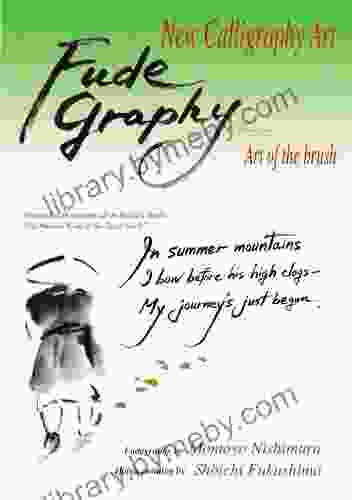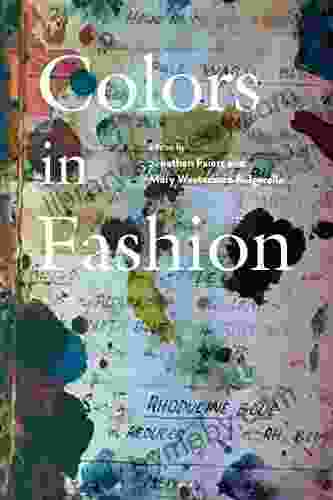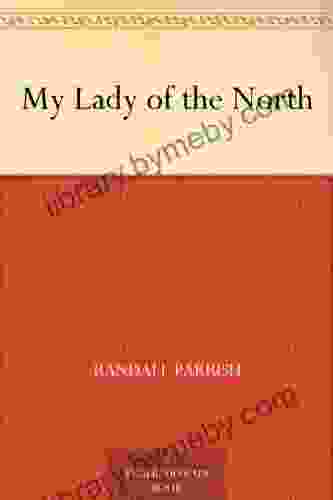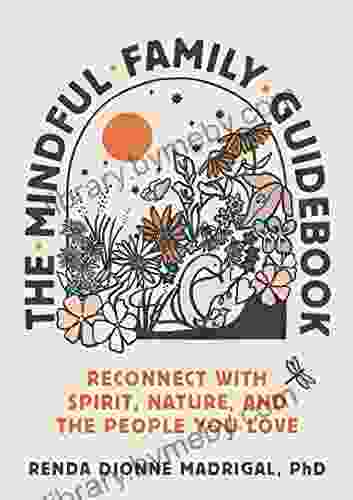New Calligraphy Art Fudegraphy Japanese Culture

In a world where technology reigns supreme, the art of calligraphy has found a niche in the hearts of modern creatives. Fudegraphy, the Japanese term for brush painting, has emerged as a captivating art form that combines tradition with innovation. This comprehensive guide to fudegraphy will take you on a journey through the history, techniques, and expressive possibilities of this ancient art form.
4.5 out of 5
| Language | : | English |
| Text-to-Speech | : | Enabled |
| Enhanced typesetting | : | Enabled |
| Lending | : | Enabled |
| File size | : | 35436 KB |
| Screen Reader | : | Supported |
| Print length | : | 115 pages |
A Glimpse into the History of Fudegraphy
The origins of fudegraphy can be traced back to ancient China, where brush painting flourished as a means of communication and artistic expression. Over centuries, the art form was refined and adapted by Japanese calligraphers, who developed unique techniques and styles that showcased the beauty and complexity of the Japanese language.
In the modern era, fudegraphy has experienced a resurgence in popularity. Contemporary artists have embraced the art form as a way to express their creativity and connect with their cultural heritage. Today, fudegraphy workshops and exhibitions can be found in cities around the world, attracting enthusiasts eager to learn the secrets of this captivating art form.
Essential Tools and Materials for Fudegraphy
To embark on your fudegraphy journey, you will need a few essential tools and materials:
- Brush: The brush is the primary tool used in fudegraphy. Choose a brush with a fine tip for precise lines and a comfortable grip.
- Ink: Japanese calligraphy ink, known as sumi ink, is made from soot and water. It is available in various shades and consistencies, allowing you to create a range of effects.
- Paper: Traditional Japanese calligraphy paper, known as washi, is made from mulberry fibers. It is highly absorbent and allows the ink to flow smoothly.
- Other tools: You may also want to invest in a brush rest and a small bowl for holding ink.
Basic Techniques for Fudegraphy
Fudegraphy involves a range of techniques that allow you to create a variety of effects. Here are some basic techniques to get you started:
- Holding the brush: Grip the brush at a 45-degree angle and rest your hand lightly on the paper.
- Brushstrokes: Practice making basic strokes, such as vertical, horizontal, and curved lines. Control the thickness and shape of your strokes by varying the pressure and angle of the brush.
- Composition: Plan the layout of your characters or design before you start writing. Consider the balance, rhythm, and negative space in your composition.
Expressive Possibilities of Fudegraphy
Beyond the basic techniques, fudegraphy offers endless possibilities for artistic expression. Experiment with different ink colors, brush sizes, and paper textures to create your unique style.
Fudegraphy can be used to create a wide range of works, from traditional calligraphy to abstract paintings. It can be used for personal expression, storytelling, or even as a form of meditation.
Embarking on the journey of fudegraphy is a rewarding experience that will connect you with Japanese culture and provide a canvas for your creativity. Whether you are a beginner or an experienced artist, this guide has provided you with the knowledge and inspiration to explore this captivating art form.
Further Resources
- Japanese Calligraphy Society
- Brushstrokes: A Journal of Contemporary Calligraphy
- to Fudegraphy: A Brush Painting Tutorial
4.5 out of 5
| Language | : | English |
| Text-to-Speech | : | Enabled |
| Enhanced typesetting | : | Enabled |
| Lending | : | Enabled |
| File size | : | 35436 KB |
| Screen Reader | : | Supported |
| Print length | : | 115 pages |
Do you want to contribute by writing guest posts on this blog?
Please contact us and send us a resume of previous articles that you have written.
 Book
Book Novel
Novel Page
Page Chapter
Chapter Text
Text Story
Story Genre
Genre Reader
Reader Library
Library Paperback
Paperback E-book
E-book Magazine
Magazine Newspaper
Newspaper Paragraph
Paragraph Sentence
Sentence Bookmark
Bookmark Shelf
Shelf Glossary
Glossary Bibliography
Bibliography Foreword
Foreword Preface
Preface Synopsis
Synopsis Annotation
Annotation Footnote
Footnote Manuscript
Manuscript Scroll
Scroll Codex
Codex Tome
Tome Bestseller
Bestseller Classics
Classics Library card
Library card Narrative
Narrative Biography
Biography Autobiography
Autobiography Memoir
Memoir Reference
Reference Encyclopedia
Encyclopedia Sophie David
Sophie David Mark Simon
Mark Simon Kuu
Kuu Shannon Philpott Sanders
Shannon Philpott Sanders Rebecca Jones
Rebecca Jones Linda P Jones
Linda P Jones Logan Thompson
Logan Thompson Nicola Yoon
Nicola Yoon Nick Duerden
Nick Duerden Steve Small
Steve Small Pat Mullaly
Pat Mullaly Tony Le Tissier
Tony Le Tissier Mary Johnson
Mary Johnson M D Cooper
M D Cooper Luma Mufleh
Luma Mufleh Liz Lawson
Liz Lawson Susanne Pilastro
Susanne Pilastro Shifio Patterns
Shifio Patterns S E Bowler
S E Bowler Simran Chawla
Simran Chawla
Light bulbAdvertise smarter! Our strategic ad space ensures maximum exposure. Reserve your spot today!

 Bradley DixonThe Halifax Explosion and the Persecution of Pilot Francis Mackey: Uncovering...
Bradley DixonThe Halifax Explosion and the Persecution of Pilot Francis Mackey: Uncovering... Hank MitchellFollow ·5.6k
Hank MitchellFollow ·5.6k Aron CoxFollow ·17k
Aron CoxFollow ·17k Finn CoxFollow ·11.3k
Finn CoxFollow ·11.3k Kyle PowellFollow ·6.4k
Kyle PowellFollow ·6.4k Emmett MitchellFollow ·12.4k
Emmett MitchellFollow ·12.4k Braden WardFollow ·7.9k
Braden WardFollow ·7.9k Cade SimmonsFollow ·2k
Cade SimmonsFollow ·2k T.S. EliotFollow ·11.9k
T.S. EliotFollow ·11.9k

 Clay Powell
Clay PowellDiscover the Enigmatic Beauty and Profound Meaning in...
An Exploration of Emptiness, Fulfillment,...

 Brenton Cox
Brenton CoxThe Life and Times of the Woman Who Changed Abortion: The...
Norma McCorvey, the woman known...

 Darius Cox
Darius CoxBest 60 Short Hairstyles For Women With Thick Hair: A...
Embracing the beauty of...

 John Parker
John ParkerThe Healthy Pregnancy Book: Your Essential Guide to a...
Pregnancy is a...
4.5 out of 5
| Language | : | English |
| Text-to-Speech | : | Enabled |
| Enhanced typesetting | : | Enabled |
| Lending | : | Enabled |
| File size | : | 35436 KB |
| Screen Reader | : | Supported |
| Print length | : | 115 pages |














